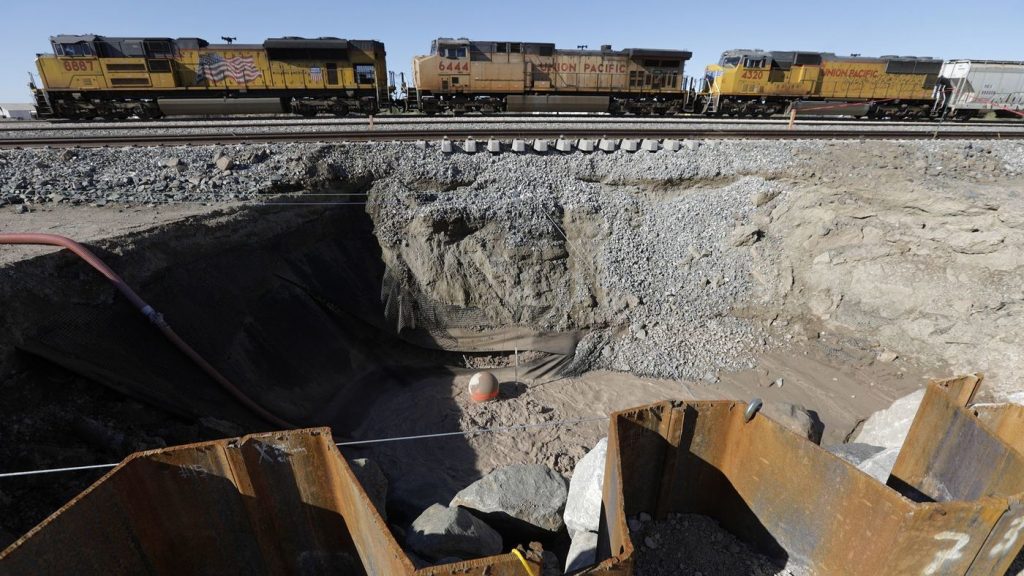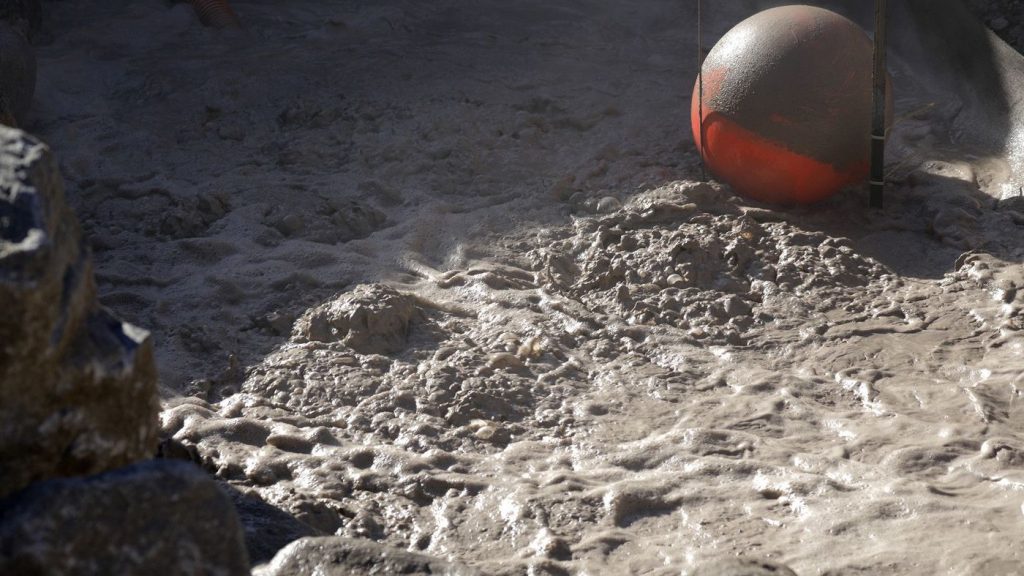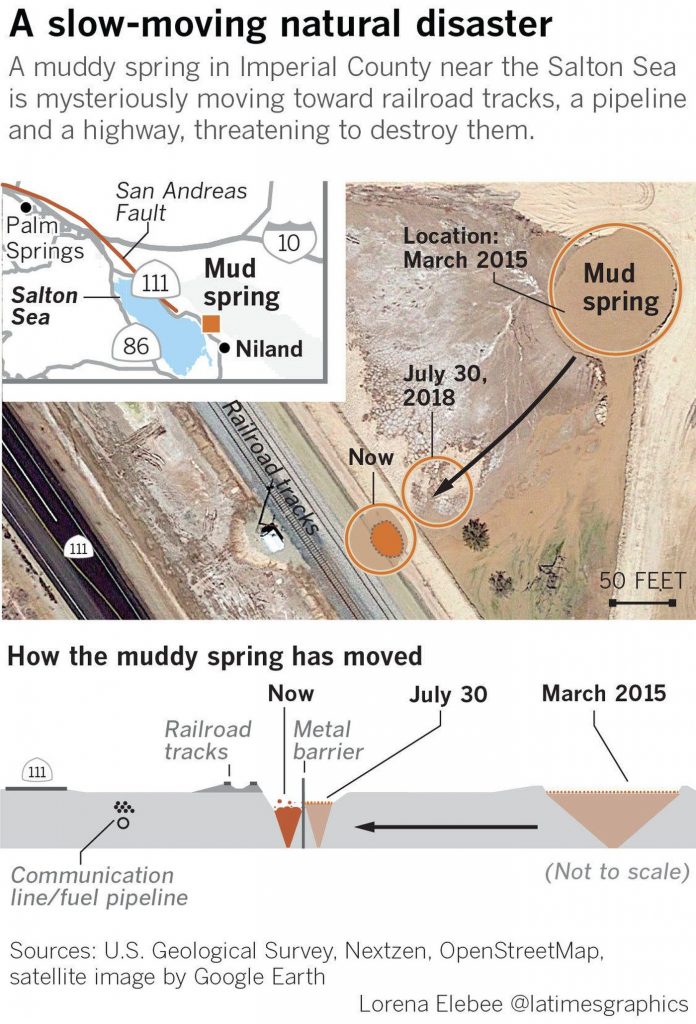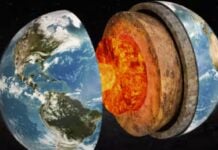The San Andreas fault begins its dangerous dance through California at the Salton Sea, at a spot that seismologists long have feared could be the epicenter of a massive earthquake. But in recent months, this desolate location where the North American and Pacific plates rub together has become the focus of intense interest for a type of movement that is less the Big One than the Slow One. A muddy spring mysteriously has begun to move at a faster pace through dry earth — first 60 feet over a few months, and then 60 feet in a single day.

Residents near Niland, California, are concerned about this mud geyser that has changed locations along the San Andreas Fault and that has recently moved 60 feet in one day.
The geyser, also called a mud pot or mud spring, has been in existence near Niland, California, since 1953, an Imperial County fact sheet says. It has moved slowly for the past 11 years, but recently, that movement has accelerated. It’s near the southern end of the San Andreas Fault.

There’s no evidence suggesting this is an immediate precursor to a large earthquake. In fact, the area has been seismically quiet in recent months, with relatively few earthquakes. The movement is not seismic activity. But it’s occurring partly as a result of historic earthquake activity that caused cracks, allowing gases produced deep underground to reach the earth’s surface.
According to the Seismological Society of America, mud pots are “geothermal features produced when water or gas is forced upward through soil and sediments.” They resemble sinkholes and can contain gas seeps, bubbling water or thick mud. They can also be full of water, like the one in Imperial County. Carbon dioxide that is created deep beneath the Earth’s surface rises up through fractures in the surface and causes the water in the mud pot to bubble.
The biggest worry is that the slow-moving scientific mystery could become destructive in other ways as it is dangerously approaching railroad tracks and a major highway. Union Pacific is leading efforts to prevent the geyser from reaching the tracks, State Route 111, a petroleum pipeline, and fiber optic telecommunications lines.
Earlier this year, the railroad dumped stone into the basin and built a steel wall 75 feet deep and 120 feet long between the mud pot and the tracks, the Southern California Earthquake Center said in a report. The railroad also drained the basin and set up wells to release pressure on the mud spring. The county even declared an emergency this summer to speed up efforts to prevent the geyser from reaching Union Pacific’s tracks.

In October, however, the muddy mess seeped under the steel wall and moved even closer to the tracks. Union Pacific has built alternate tracks, called a shoofly. Trains are using that track and are moving at a slower pace. A company spokesman told the Los Angeles Times a bridge may have to be considered.
Ed Joyce, a spokesman for the California Department of Transportation said: “Caltrans will have to close State Route 111 if that mud pot advances to a point where it impacts the state road. We obviously have to divert traffic.”
This mysterious mud geyser is another slow-moving disaster for California.
Follow us on Facebook and Twitter or become a Patron on Patreon / donate through Paypal. Please and thank you.
Los Angeles Times – A San Andreas fault mystery: The ‘slow-moving disaster’ in an area where the Big One is feared
Weather – Creeping Natural Disaster in California Threatens Train Tracks, State Highway










